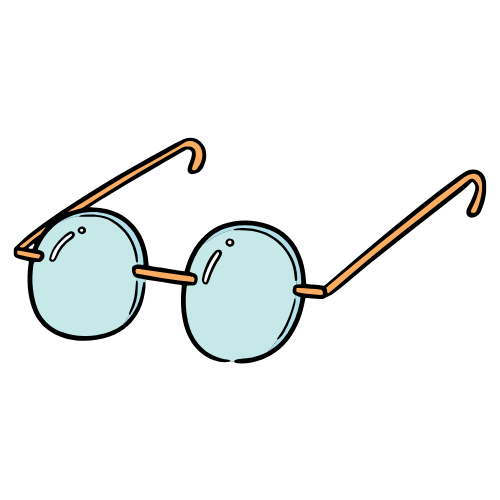I remember two dolls growing up. One of them was a Harlequin rag doll, bald and with a shredded lace collar sewn around its neck. It had belonged to my mother before me, and by the time it got into my possession, signs of it having been well-loved were more than a little visible. It had pencil marks on its bald head, and the once lively colours of its costume had faded to dusty, greyish reds, blues and greens. The other was made of hard plastic with dark-red wire-like hair and glassy blue eyes shadowed by long black eyelashes. The doll had a button on its back which, when pressed, caused it to make a “mama”-like sound. It was, in fact, a bad imitation of a human voice, a sort of screechy, shrill sound which didn’t motivate me to make it speak again. No wonder I ended up preferring books to dolls.
Books such as Kazuo Ishiguro’s Klara and the Sun enhance the reality which has lost its spark and became dull and invisible because we live so much in it. But Ishiguro’s novel is by no means escapist. It gives back reality what belongs to it. To do that, it recasts dolls as AIs, turns humans into dolls and leaves the reader wondering what the difference between all of that is, anyway. Klara is the protagonist and first-person narrator AI in Klara and the Sun, and everything that happens throughout the novel, we learn from and through her. Klara is AI for the reader, but, in the language of her world, she is AF, an artificial friend meant to serve as a companion for a child. We learn early on that Klara is even something more. She has observational abilities which place her above other AIs in her class and manifests an interest in the world outside.
While discovering the world around her, Klara talks about things and situations which are at first not very clear. For the human reader, that is. For Klara, the AI waiting patiently in the store for a customer to take her home, it is common practice to simplify or misread concepts she isn’t familiar with. She refers to what we can only assume to be a smog-making construction machine as “Cootings Machine”, being otherwise oblivious to its actual purpose. The reader can then be none the wiser, either.
Klara’s observations, doubled by her nature as AI, are why that dull, invisible reality stops being dull and invisible. The world inside the novel mingles with, takes something from and lends something to the world of the reader. What I like to call “Ishiguro’s defamiliarization by AI technique” puts humans face to face with a world they cannot take for granted anymore. Klara takes the reader by the hand and shows her a new, re-shaped world, both metaphorically and objectively speaking. Klara’s idiosyncratic way of speaking clearly puts her in contrast with a human speaker. The reader is never allowed to forget that she is told a story by a very radical “other”, a “non”, an artificial being which, because it is everything no reader is, cannot be and has not been, has a point of view in which the world is created anew.
Klara’s vision is radically different from a human’s, as well. This is maybe one of the greatest mysteries of the novel. Why does Klara see in “boxes”, as she herself puts it? Is it only her, or is it a general AI “feature”? “The room’s space has become divided into twenty-four boxes”, Klara tells us during a social meeting. As Klara in the grass outside Josie’s house sometimes, I was disoriented at this point. At first, I assumed the meeting was taking place in a holographic online environment, but there’s something very physical and non-metaphorical to Klara’s vision. When she and Josie’s mother go on a day trip, she describes “the smooth line of the road as it moved from one box into the next”, and about the mother, she says, “I could see joy, fear, sadness, laughter in the boxes”. Klara’s AI vision delivers her surface, uninterpreted information, but also deep insights into the emotional state of the people she interacts with. For the reader, emotion becomes visible and fragmented.
Defamiliarization works in one direction, from AI to human. In the human to AI direction, metaphor is at play. Klara develops particularities which, like Frankenstein’s creature, reveal her to be a creation of the human mind. She fanatically believes in the “nourishment” of the Sun to the point where it becomes superstition. She is eager to learn anything and everything and is especially interested in human relationships, even if she doesn’t always understand the situations she’s looking at. The stories she is building are sometimes coherent, such as the religious system centered around the Sun, and sometimes they are lacking any sort of narrative thread, such as the scene she observes between two characters she calls Raincoat Man and Coffee Cup Lady.
Of the two dolls I had, I was more attached to the Harlequin. It wasn’t trying to be what it wasn’t. It was an old, dusty rag doll and, in some way, I think it knew that. I was comfortable playing with it. The hard plastic doll was a different story altogether. I couldn’t really place it in my world. It had hair which wasn’t real hair and eyes which couldn’t look at me and a voice which I was better off not hearing. It was uncanny, now I know. Klara and the Sun paints this kind of world where boundaries are overstepped because one, it’s what makes a good story and two, it’s the blurred boundaries that raise the hard questions. Klara’s story defamiliarizes the world for us and she herself lives in a metaphor which doesn’t belong to her and works for the benefit of humans. We, in the end, get the best of both worlds. What does Klara get? Her slow fade, yet another metaphor. Is she entitled to anything more?





your thoughts?